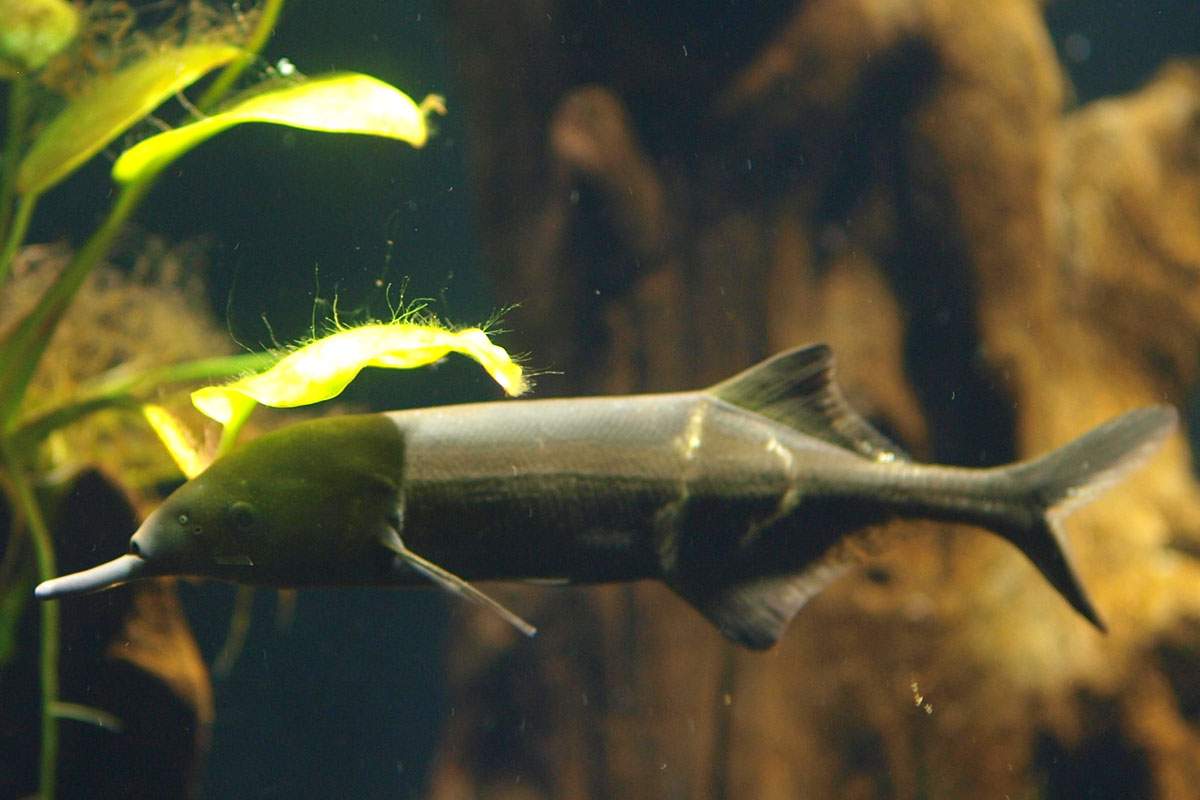
Some fish can sense electric fields in the water.
The elephantnose fish emits short pulses of electricity up to eighty times a second, and senses the returning reflections from objects with electrical sensors in its long elephant-like snout. In 2018 biologists reported that these fish can sense qualities they called "electric colors."
All this will make more sense if we start with how people see colors. Our eyes have different kinds of light-sensing cells, sensitive to different ranges of light wavelengths. The color we perceive a surface to be depends on how the light it reflects activates the light-sensing cells. This ensures surfaces have the same perceived colors when viewed under different conditions.
Fish Anatomy
The fish has two kinds of electricity-sensing cells on its snout, much like the kinds of light-sensing cells our eyes use for color perception. One kind senses the intensity of the electric pulse reflection, and the other senses its shape.
The researchers think the fishes‘ brain combines the two signals to make a perceptual quality they call "electric color," just like our brain combines signals from light-sensing cells to make color.
Researchers can tell what the fish are sensing because the fish are very good at distinguishing the signal of their favorite prey, mosquito larvae, from other cues that would confuse it if it used the two sensors separately. To find its prey, the fish must combine their signals to make "electric color."
Sources And Further Reading
- Elephantnose Fish Use Electric Colors to Reliably Identify Prey, Study Says. Sci News, November 21, 2018.
- Gottwald, M., et al. (2018). Electric-Color Sensing in Weakly Electric Fish Suggests Color Perception as a Sensory Concept beyond Vision. Current Biology. 28 (22), 3648-3653.
- Marshall, M. Fish with elephant‘s nose and crystal eyes. New Scientist, June 28, 2012.









